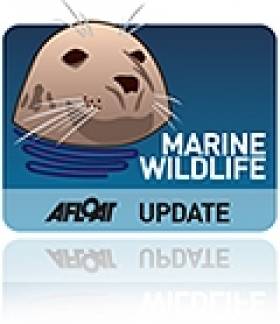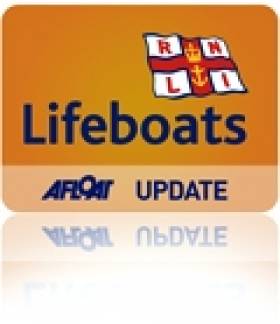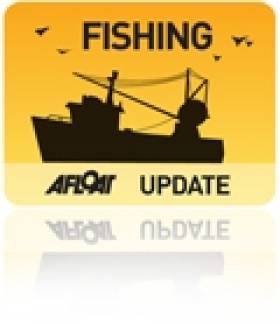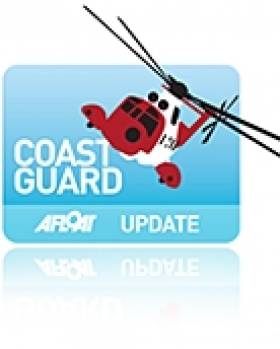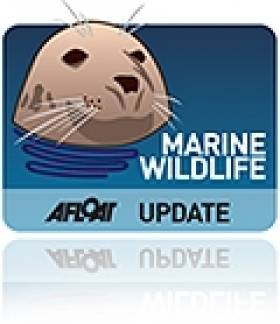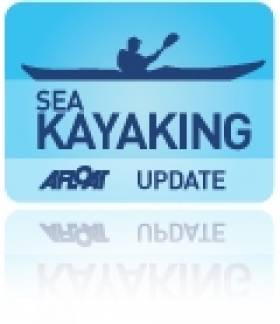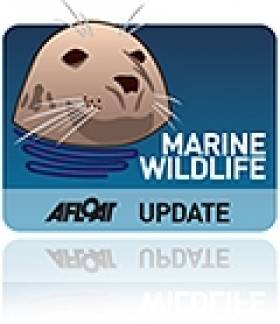Displaying items by tag: irish sea
Sharks And Sunfish Bring Irish Sea To Life At Summer's End
#MarineWildlife - The Irish Sea is providing plenty of big game for sea angling enthusiasts as of late, with impressively sized porbeagle sharks among the recent catches.
As Angling Times reports, Dutch angler Robin Van Da Meer reeled in a 300lb beast off the Antrim Coast just days after Bangor man Brian Menary landed a 360lb specimen from the same boat, Predator 2, out of Red Bay.
But that's just the tip of the iceberg, as Wirral News remarks on the "flurry of exciting wildlife sightings" from the British side of the Irish Sea.
Experts say the warm weather that has mostly persisted since the end of the summer is largely responsible for the increase in sightings of such rare visitors as leatherback turtles, and the enormous ocean sunfish – two of which have been seen outside their usual haunts off the south of England.
According to Emily Baxter of the North West Wildlife Trusts, keen spotters on the Irish Sea coast – or even ferries crossing back and forth – "could be in for an exciting end to the summer".
Isle Of Man Lifeboat Launches To Person In Irish Sea
#RNLI - Lifeboat volunteer crewmembers with Douglas RNLI on the Isle of Man were paged at 9.24pm on Thursday evening (11 September) to a report of a person in the Irish Sea off Victoria Pier.
The all-weather lifeboat Sir William Hillary was launched under the command of coxswain Neal Corran, who proceeded to the seaward side of the Victoria Pier where the person was successfully located.
The casualty was recovered to the lifeboat and taken immediately to the Liner Berth inside the harbour to a waiting ambulance.
The lifeboat then returned to the boathouse to be washed down, re-fuelled and was ready again for service at 10.15pm.
State Of Irish Sea Salmon 'Rather Poor' Despite Industry Efforts
#Fishing - Salmon and cod numbers in the Irish Sea have continued to decline despite strict fishing and angling controls, according to BBC News.
The "rather poor" forecast for the important fish species comes from data collected by the Agri-Food and Biosciences Institute (AFBI) via its research vessel The Corystes, which sails the Irish Sea over 200 days a year and sets the standard for EU fishing quotas.
The AFBI's Walter Crozier said stocks had not "bounced back in the way that scientists expected. So we're now looking at other explanations because there isn't much more the fishing industry can do to reduce their catch of cod in the Irish Sea."
Such factors may include climate change causing a rise in sea temperatures, and increasing diversity of the marine ecosystem.
BBC News has much more on the story HERE.
Rising Seas Pose Future Leak Threat To Sellafield Dump
#IrishSea - One million cubic metres of radioactive waste at a dump site near Sellafield is at risk of contaminating the Irish Sea in the future, according to papers released by Britain's Environment Agency.
According to The Guardian, the internal report says it is "doubtful" whether the location of the Drigg Low-Level Waste Repository (LLWR) on the Cumbrian coast "would be chosen for a new facility for near-surface radioactive waste disposal if the choice were being made now."
Though the full effects of coastal erosion, weathering and flooding are not expected to be felt until "a few hundred to a few thousand years from now", the agency has expressed worry over the site's gradual exposure to the elements.
This is compounded by fears that past deposits at the site over the last 55 years have included higher-level radioactive waste than intended.
The Guardian has more on the story HERE.
Coastguard Locates Stricken Irish Sea Vessel & Tows to Safety
#coastguard – A vessel that first reported suffering steering problems off the south west of Scotland early this afternoon has now been found and towed to safety.
Liverpool Coastguard received a 999 call from one of the two people on board the vessel just after 1pm this afternoon, reporting they were having mechanical problems. They said they were was just south of Burrow Head, having set off from Oban and heading to Liverpool.
The Ramsey RNLI all-weather lifeboat was sent to the scene, but they could not track down the vessel. Liverpool Coastguard managed to get hold of those on board again and soon established they were in a different position near the Cumbrian coast. The Workington RNLI all-weather lifeboat joined the search, but again on arrival at this new position there was no sign of the vessel.
Further contact was made with the two on board the boat, who were told to set off their distress flares. These weren't spotted by those on scene. In light of the approaching darkness and misty conditions, the Whitehaven and Maryport Coastguard Rescue Teams were sent to carry out harbour and coastal searches. The search and rescue helicopter from RAF Valley was also sent to join in the search and a mayday relay broadcast was made asking for any other boats to report sightings.
The helicopter from RAF Valley finally located the vessel just before 6pm this evening off Harrington, Cumbria. The boat was then towed into Workington harbour and met by the Maryport Coastguard Rescue Team.
Lucy Hicks, Watch Manager at Liverpool Coastguard, said:
"This was a difficult rescue as we did not have the exact location of this vessel. They didn't have a VHF radio on board or an emergency beacon which could have sent a more accurate position of where they were.
"An extensive search continued for a number of hours, and with darkness fast approaching along with deteriorating weather conditions, we needed to find this boat. Luckily, they were spotted by the search and rescue helicopter and then taken to safety.
"We always recommend that boats are well equipped with all the necessary communications and navigation equipment on board. It's also useful to have an Emergency Position Indicating Radio Beacon (EPIRB) or a Personal Locator Beacon (PLB) with you, which can send an accurate position of where you are to the Coastguard."
Irish Sea A 'Breeding Ground' For Dolphins Say Manx Researchers
#MarineWildlife - Five Risso's dolphin calves spotted by researchers off the Isle of Man this summer point to the waters of the Irish Sea as a breeding ground for the gregarious marine mammals.
As BBC News reports, the five calves were seen north of the Calf of Man at the end of July.
And according to a spokesperson for the Manx Whale and Dolphin Watch: "It means Manx waters must be important to the breeding population of Risso's dolphins in the Irish Sea."
The waters between the east coast of Ireland and north-west England and Wales are known to be teeming with dolphins of different species, with video of a dolphin 'superpod' wowing ferry-goers earlier this year.
BBC News has more on the story HERE.
ISORA Champions 'Sgrech' Retain Title in Final Race to Dun Laoghaire
#isora – Under not ideal weather and sea conditions yesterday's final ISORA race of 2013 was a battle of gargantuan proportions between the Series leader "Ruth" and close second "Sgrech". The two J109's, with "Sgrech" only giving 43 seconds in the expected 12 hour race "Ruth" writes ISORA chairman, Peter Ryan.
After a long season with many boats having races and sailed thousands of miles. With some boats with gear problems and others with crew fatigue after three consecutive weekends of offshore racing, only 13 boats out of an entry list of 22 came to the start line in Pwllheli. The PSC starter Richard Tudor sent the fleet of on a direct course from the start to the finish in Dun Laoghaire.
The weather forecast appeared to be very manageable with the winds of maximum 25 knots, north west backing south west over the day. Unfortunately the north west wind had been blowing strong for all the previous day producing overall conditions at Bardsey that were not pleasant. The first leg to Tudwals was a tight reach. After the warning signal "Sgrech" and "Ruth" commenced manouvers to get the better start. The two boats headed off in front of the fleet within a boat length of each other towards Tusdal's sound.
In Tudwal's sound more tussles arose between the tow boats in the form of a luffing match. This facilitate "Pipedreamer 6", "Mojito" and "Lula Belle" to pass them into the lead. Sea condition past Tudwal's sound warned of what was going to be met at Bardsey. It was a beat to Bardsey. While most of the fleet chose to go through the sound with the north going tide some boats including "Sarnia" ventured outside the island. The five lead boats arrived at Bardsey close together with "Ruth" and "Sgrech" exchanging tacks.
Conditions at Bardsey Sound were "pretty bad"!!!!. Huge and breaking seas met those who ventured through. "Sgrech" recorded a ground speed of 14.2k at one stage. "Windshift" suffered some slight gear damage with the pounding and retired. At the same time the life raft on "Sgrech" broke its fixings and was heading off the stern before the crew managed to retrieve it. "Poppy of Brighton" had retired earlier.
Exiting Bardsey "Ruth" and "Sgrech" were still within boats lengths of each other and leading the fleet with "Mojito" close behind and headed off north on a beat in the north going tide. The wind was still north west. Over the following few hours, the backing wind lifted the boats on the north leg of the beat to arrive north of the Bailey lighthouse. At all time "Ruth" and "Sgrech" were within 100m of each other with the boast being side by side "Ruth" being to weather. Felloe J109 "Mojito" was close behind.
It was only just approaching the Kish Light that "Sgrech" regained the advantage and set the scene of the tacking duel between the two boats across Dublin Bay to the finish at Dun Laoghaire Pier heads. "Sgrech" held the lead and finished just 1 minute 50 seconds ahead of "Ruth". "Mojito" finished approximately 10 minutes behind the leaders to give the J109's a 1st, 2nd and 3rd place overall and Class 1. "Sarnia", the oldest and lowest rated boat in the fleet took Class 2 and Silver Class Overall with "Lula Belle" taking 2nd Class 2 and "Yahtzee" taking 3rd Class 2 and 2nd Silver Class while Sigma 33 "Polished Manx" took 3rd Silver Class.
The result of the gargantuan battle between "Ruth" and "Sgrech" was that "Sgrech" retained the ISORA lynx metmAsts Offshore Series 2013 champion status, ahead of "Ruth". "Polished Manx" is the ISORA lynx metmAsts Offshore Silver Series 2013 champion. Full details are below.
The usual "dignified" end of series party took place in the NYC immediately after the race.
The progress of the race was recorded using the PredictWind tracker but some boats had technical problems. It can be viewed on the iPhone or smartphone app or on the website at http://forecast.predictwind.com/tracking/race/ISORA It is hoped to make the use of this tracker as mandatory for next years races however this will be discussed at the ISORA AGM in the NYC on the 16th November.
The prize giving will take place at the ISORA annual dinner to be held in the NYC on the 16th November. To avoid disappointment, it is vital that places are booked early with the club.
It was a fitting and exciting end to a very success offshore series where, with the possible exception of yesterday's race, all the races were sailed in great racing conditions. It is hoped that this close racing will attract new boats to enter and race "outside of the Bay".
#MarineWildlife - A humpback whale new to Irish waters has been confirmed by the Irish Whale and Dolphin Group (IWDG).
Photos of the humpback's fluke and dorsal fin captured by Nick Massett off Clogher and Sybil Heads in West Kerry at the weekend were examined by the IWDG's catalogue experts who have determined that the whale is a new arrival - and one with a fluke colouring that's rarely seen in Irish waters.
Details have since been sent to Allied Whale in the US state of Maine - which curates the North Atlantic humpback whale catalogue - to see if a match can be made among its database of more than 7,000 fluke images.
Meanwhile, Wildlife Extra reports that sailors in the Irish Sea are urged to keep a lookout for a large group of minke whales.
The group includes three juveniles and a calf previously spotted some 19 miles east of Ireland's Eye near Howth.
"Although sightings of Minke whale are to be expected in these waters, such a large group is a rare occurrence," said Danielle Gibas, sightings officer with the UK's Sea Watch Foundation, which is organising Britain's annual National Whale and Dolphin Watch this week till 3 August.
And in other cetacean news, scientists claim that dolphins call each other by name, calling back to the sound of their signature whistle but ignoring whistles that aren't theirs.
Herald.ie reports on the findings by marine scientists at the University of St Andrews, who studied a bottlenose dolphin group off the east coast of Scotland.
Using underwater speakers, they played synthesised versions of dolphin whistles they'd identified with particular dolphins to determine their reactions.
They were surprised to find that individuals called back after hearing their own 'name' but ignored others, whether they were for dolphins in the same group or strangers.
Derry-Born Surf Kayak World Champ Gets Congrats From Home
#Kayaking - Derry Mayor Martin Reilly offered his congratulations to native son Jake King on taking the surf kayak world title in Australia earlier this month.
As the Derry Journal reports, 18-year-old King was crowned champion after topping three other reigning top dogs in the men's longboat, masters and junior short boat in the final of the competition at Maroochydore beach in Queensland.
According to his father Paddy, Jake King can now add his name to the list of five previous world champions from the Canoe Association of Northern Ireland (CANI) surf kayak club - which includes his brother Corin.
In other kayaking news, a London paddler has broken the record for circumnavigating the Isle of Man in the Irish Sea.
BBC News reports on the feat achieved by 39-year-old George Shaw, who completed the 115km route around the island in 11 hours 43 minutes - smashing the previous record by almost an hour.
Isle of Man Sees First Humpback Whale In 3 Years
#MarineWildlife - BBC News reports that whale watchers in the Isle of Man have spotted the first humpback whale in the waters around the island since 2010.
Tom Felce of Manx Whale and Dolphin Watch confirmed the "very rare" sighting in the Irish Sea two miles south of Castletown last week.
It's an unusual location to spot one of these ocean giants, who are a regular sight off West Cork - but even cetacean spotters there have been surprised by changes in their activity as of late.
The west coasts of Ireland and Scotland lie in the humpback's usual migratory path from the cold polar waters where it feeds in summer to subtropical climes off North Africa where it breeds in winter.
BBC News has more on the story HERE.




























